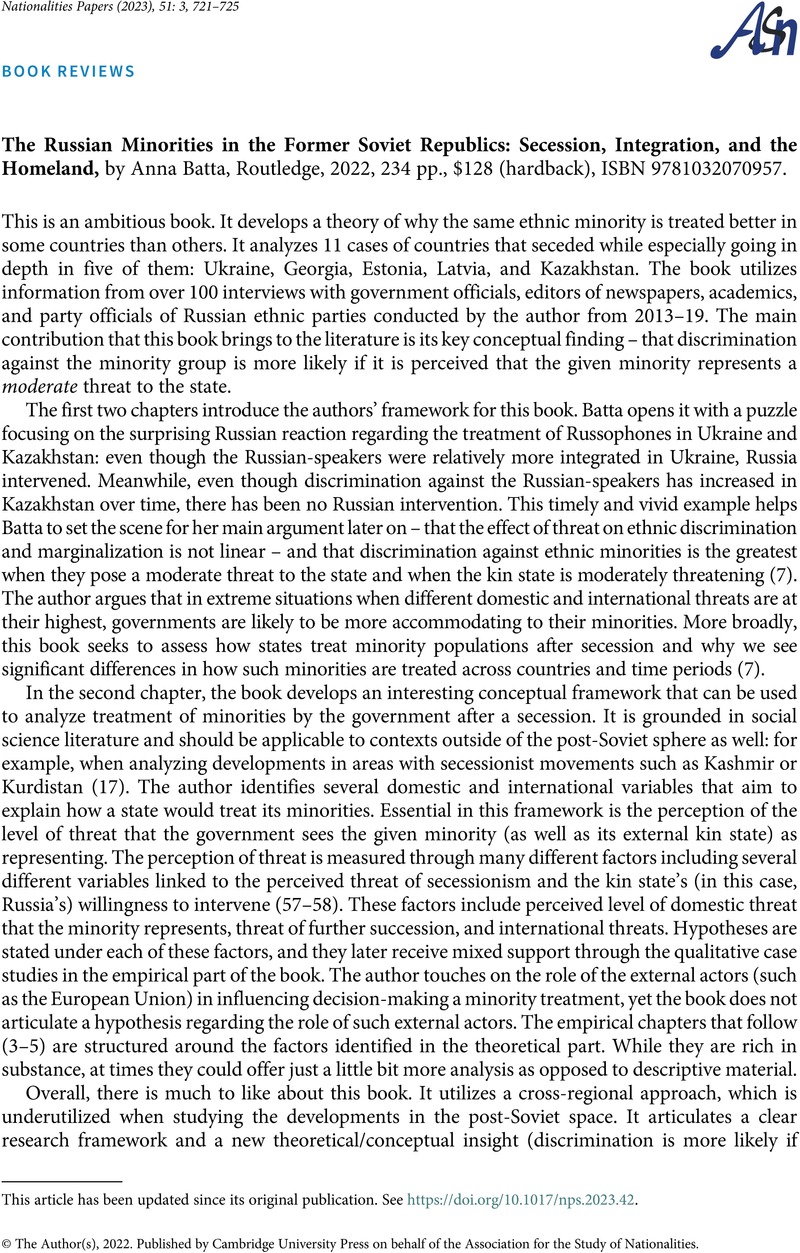Crossref Citations
This article has been cited by the following publications. This list is generated based on data provided by Crossref.
Pupcenoks, Juris
2023.
The Russian Minorities in the Former Soviet Republics: Secession, Integration, and the Homeland, by Anna Batta, Routledge, 2022, 234 pp., $128 (hardback), ISBN 9781032070957. – CORRIGENDUM.
Nationalities Papers,
p.
1.




